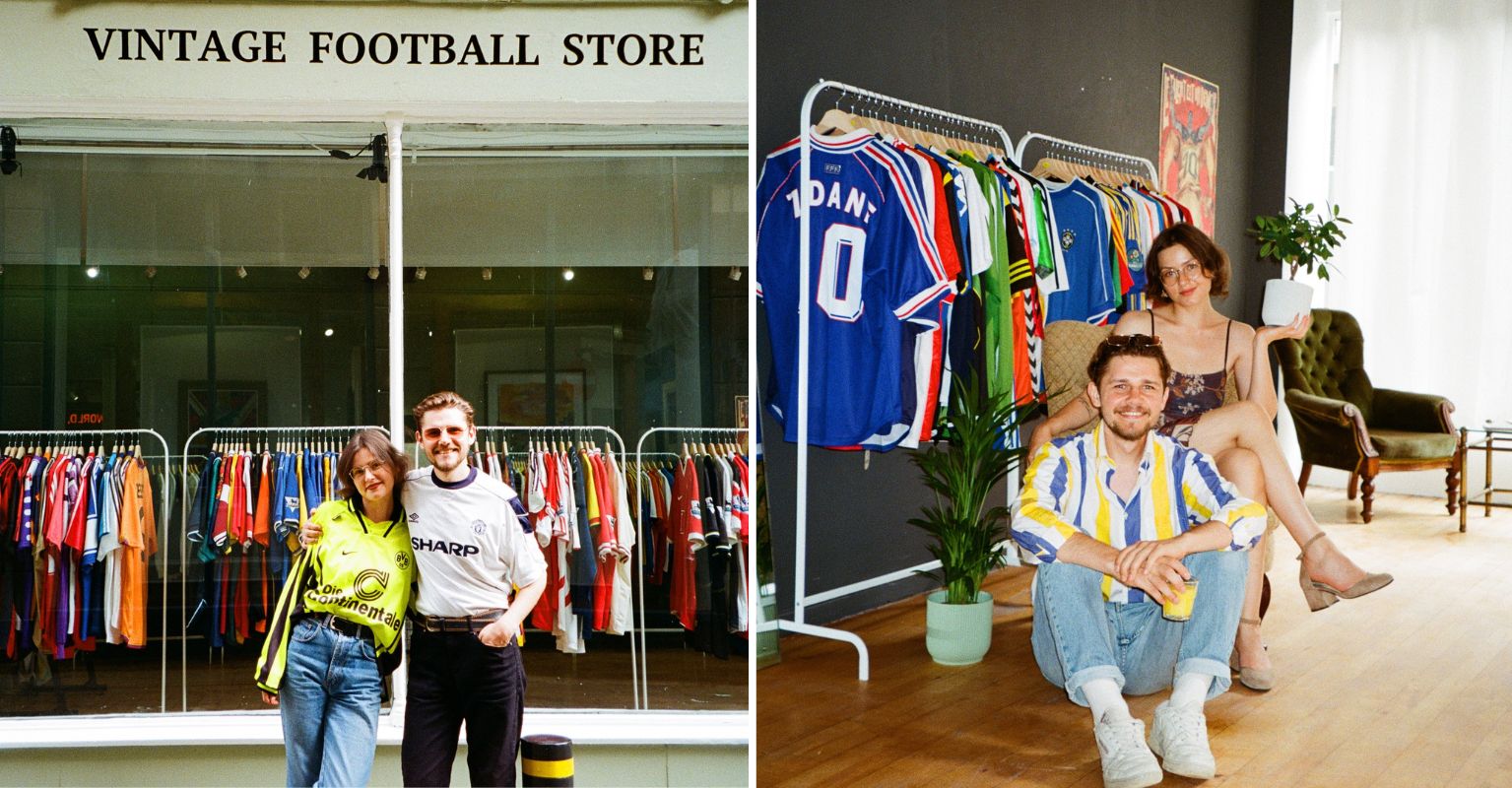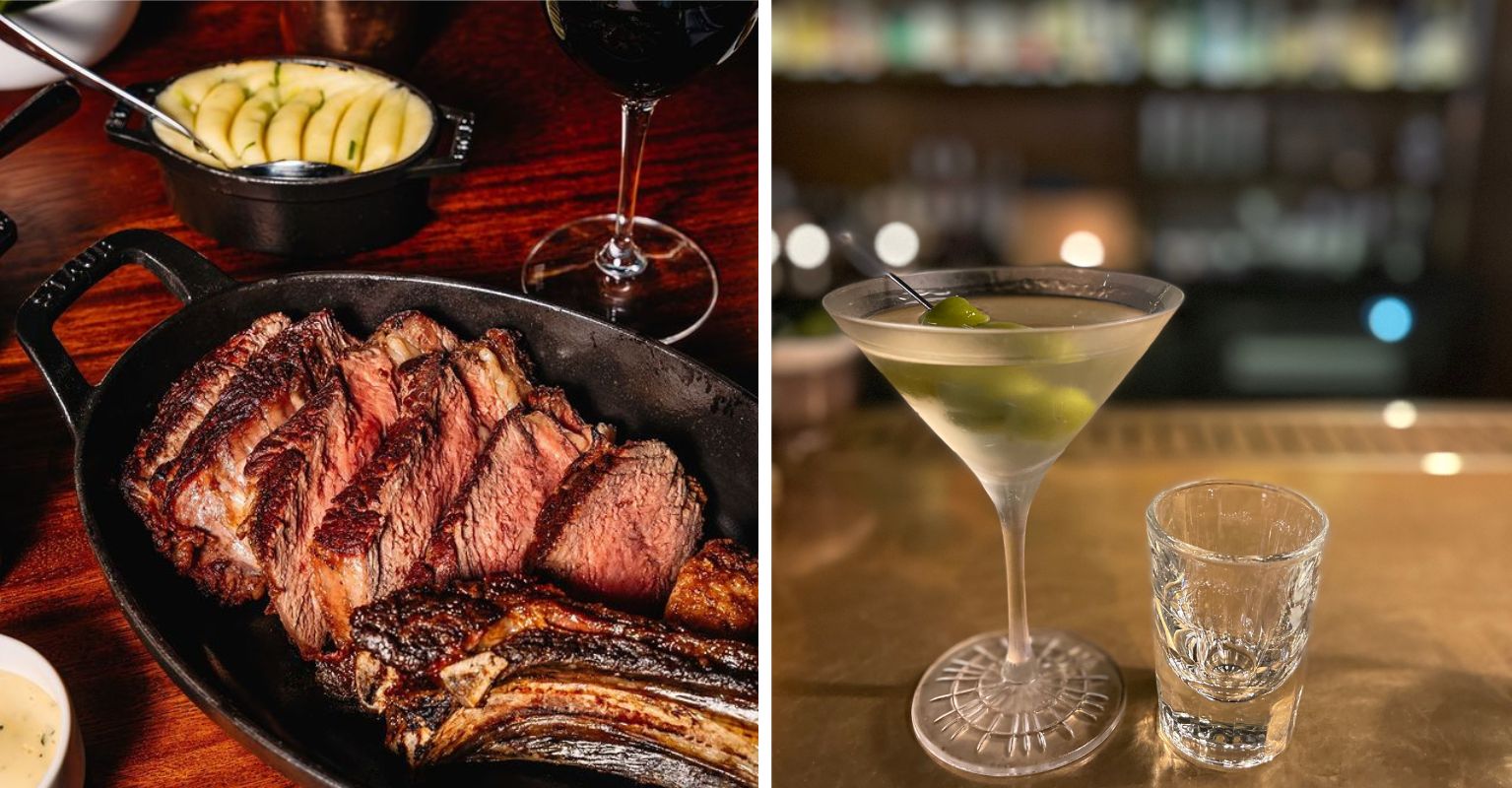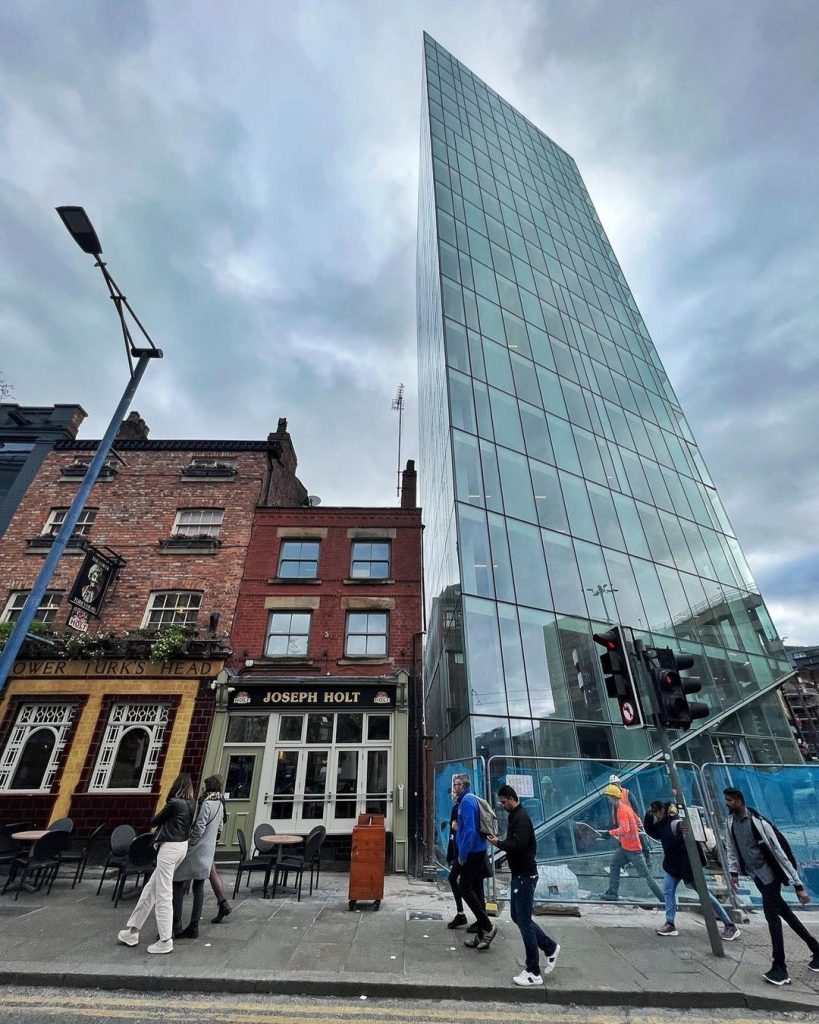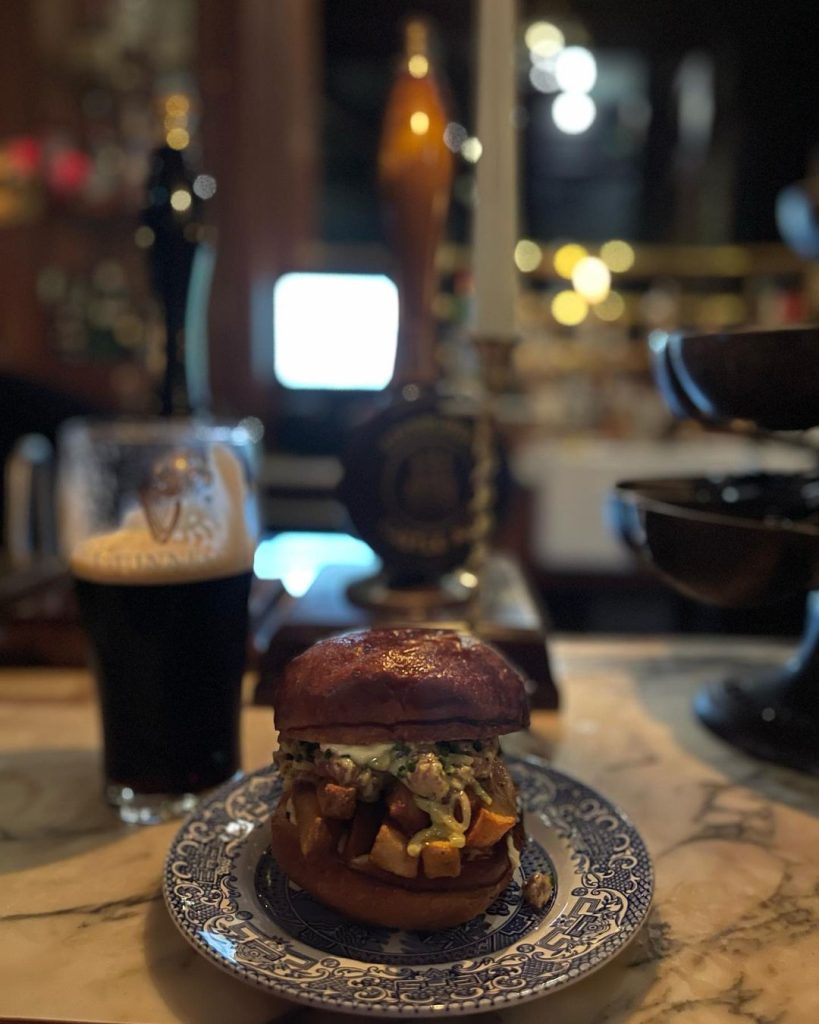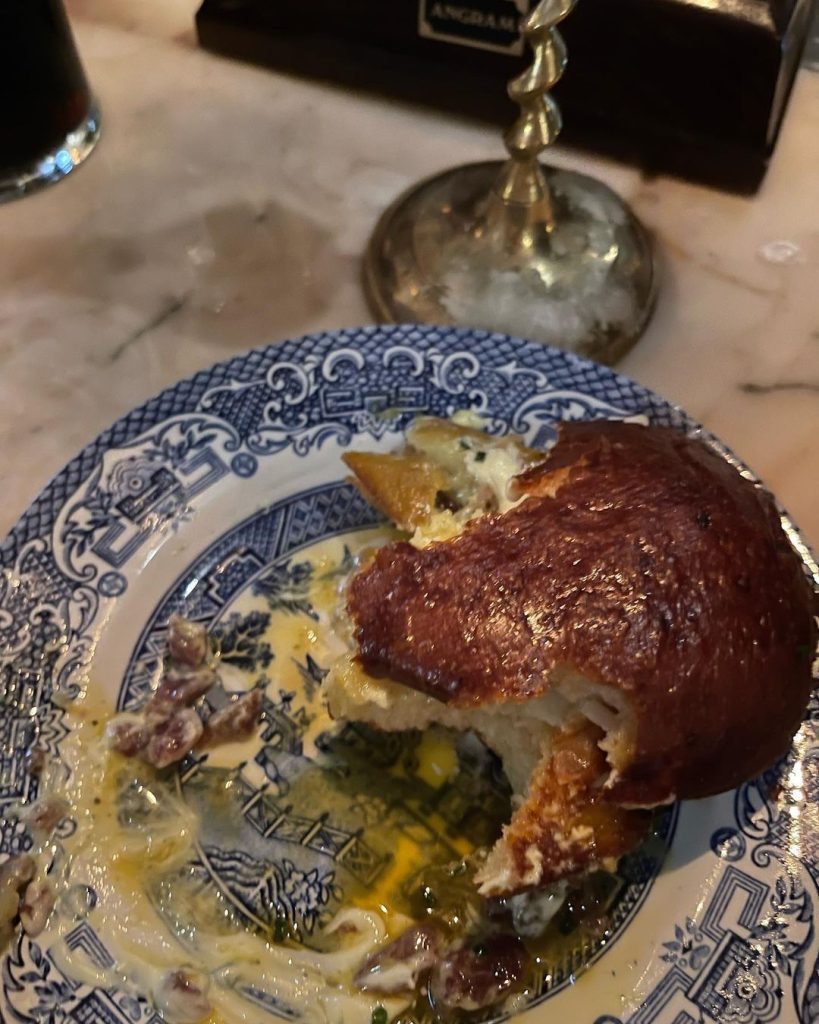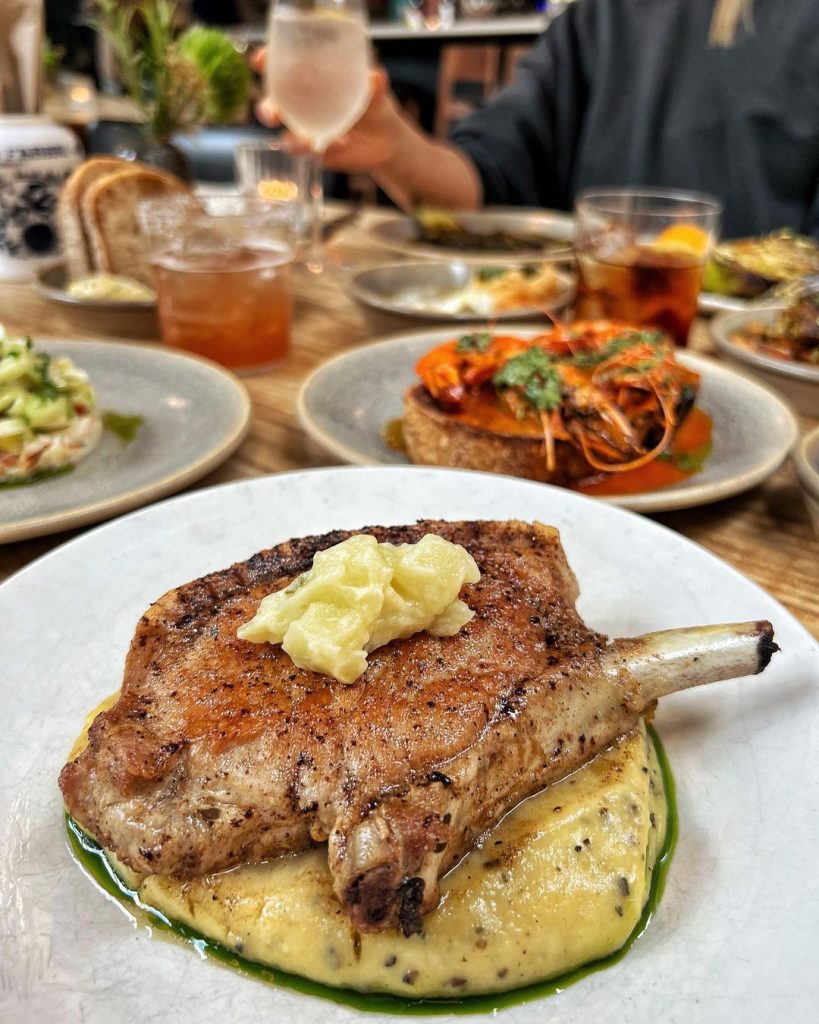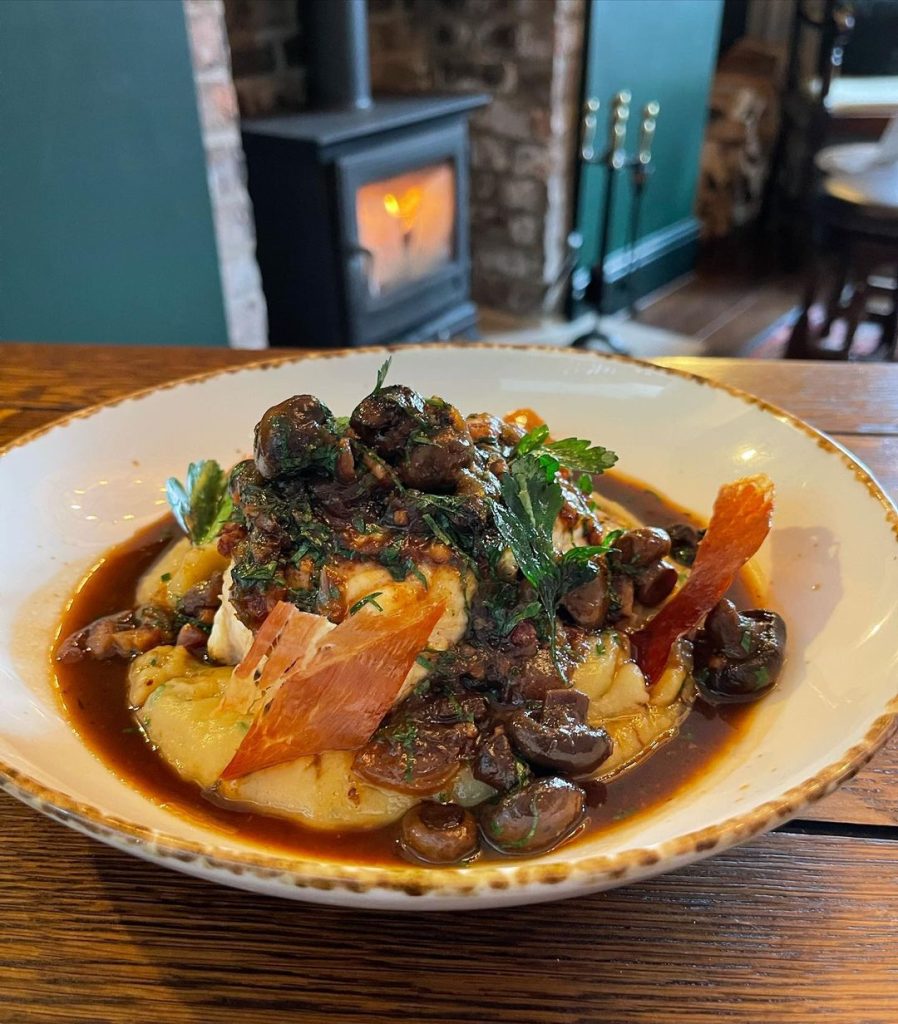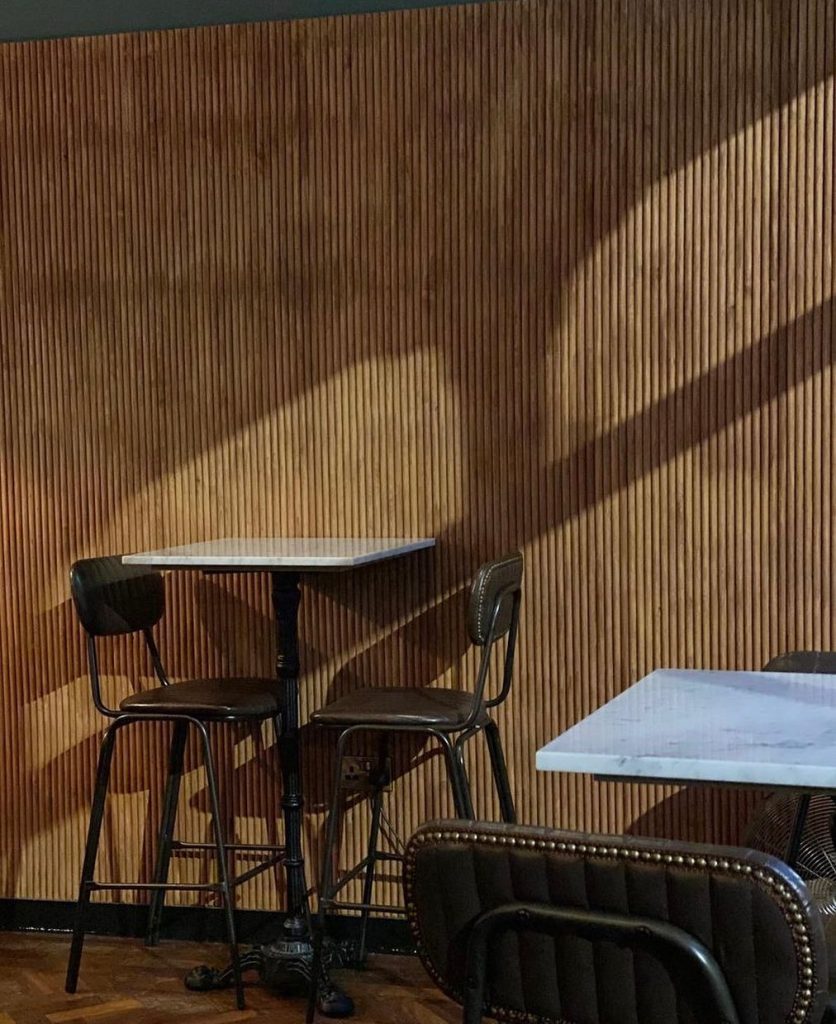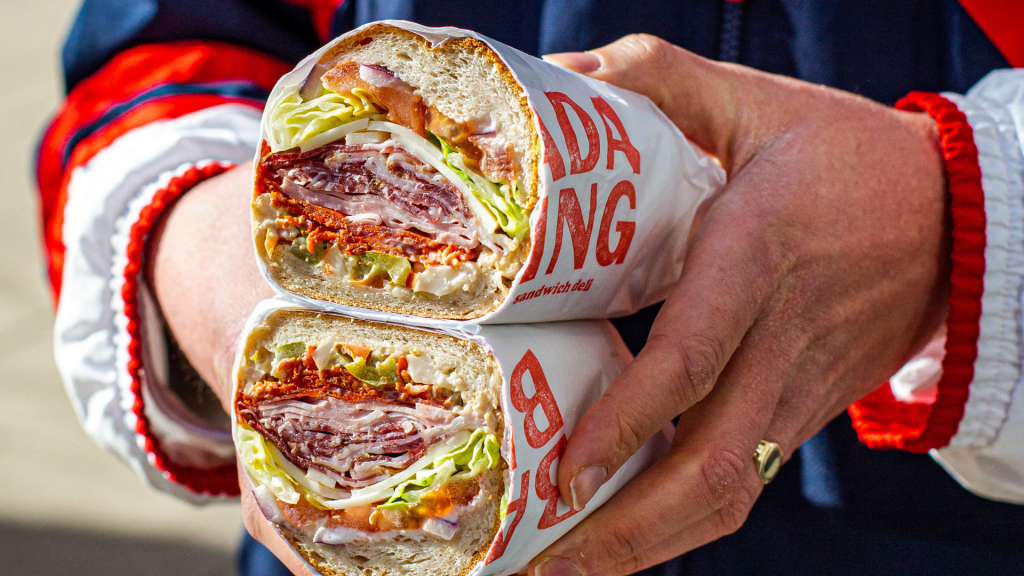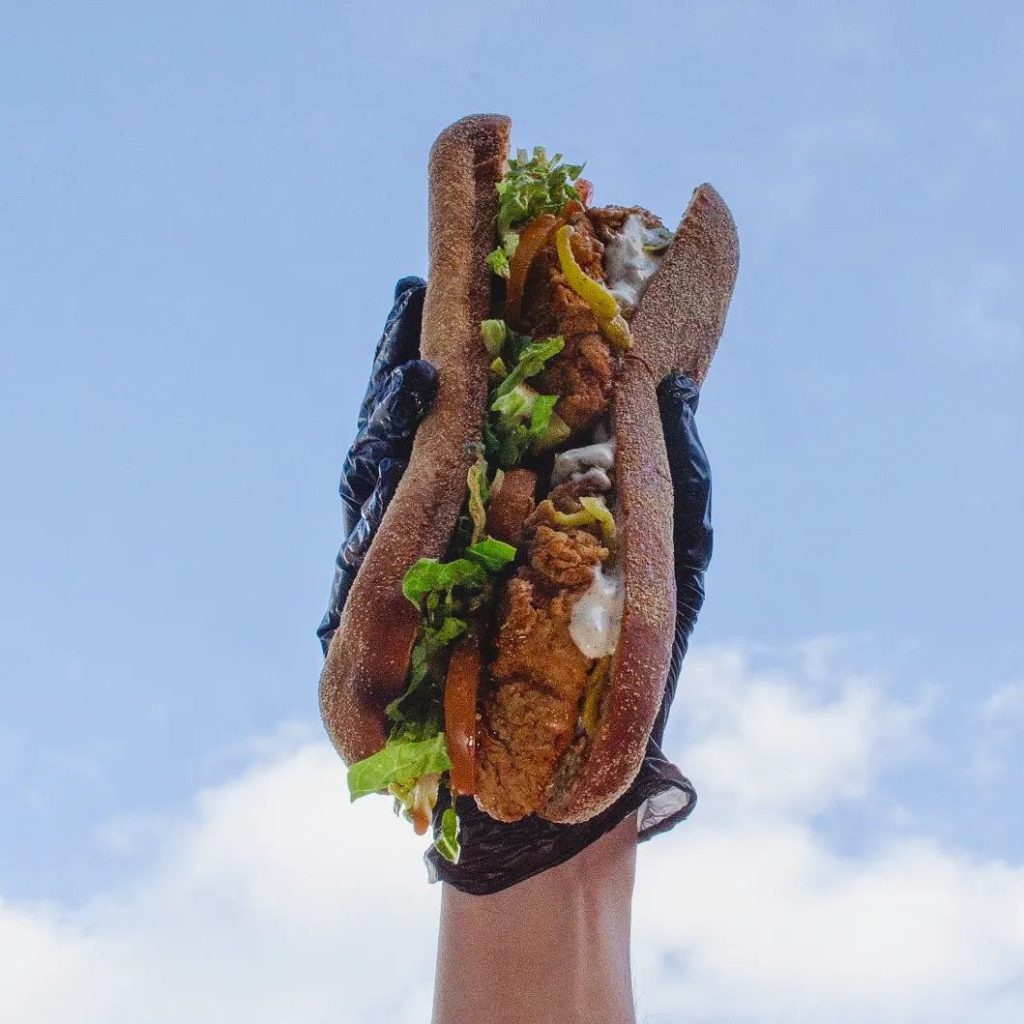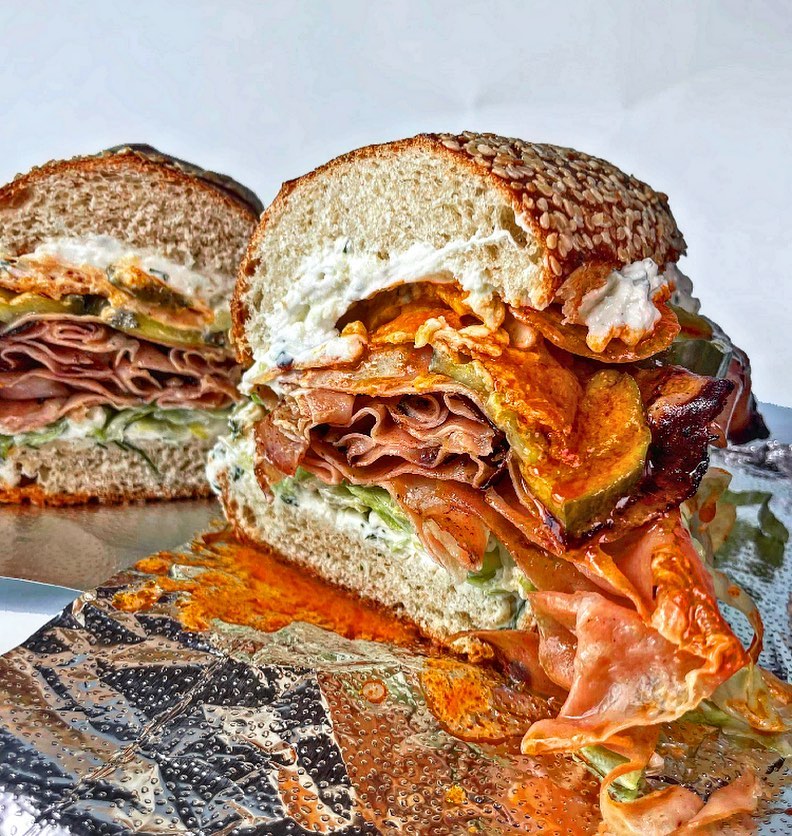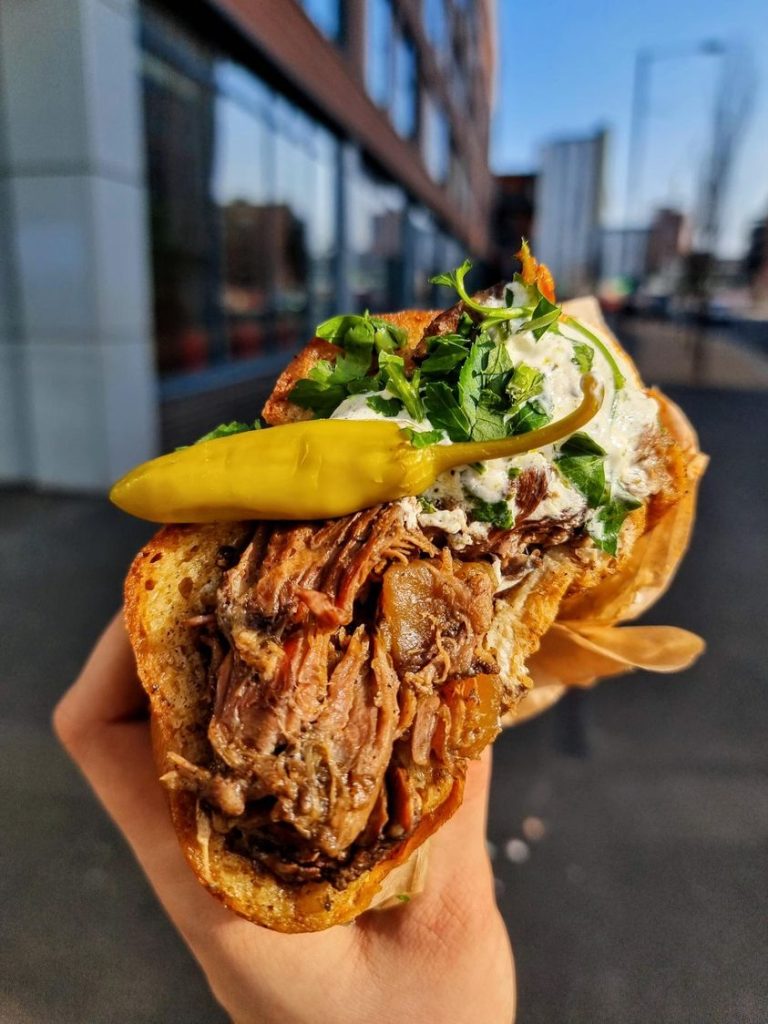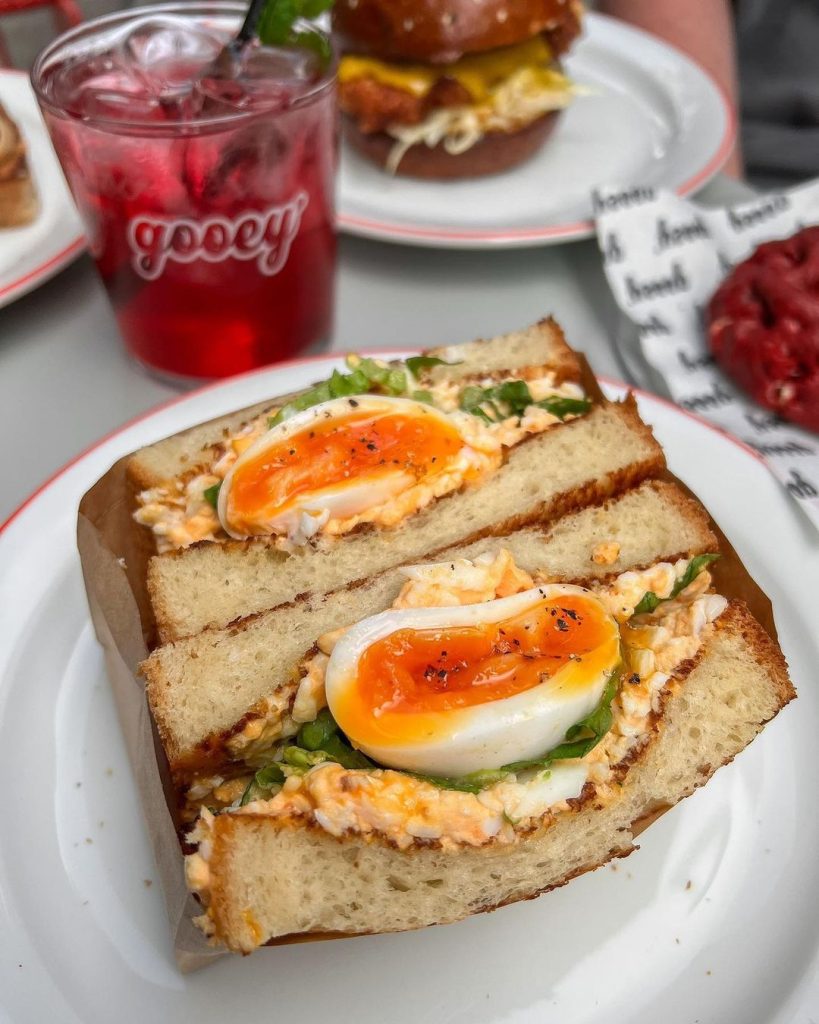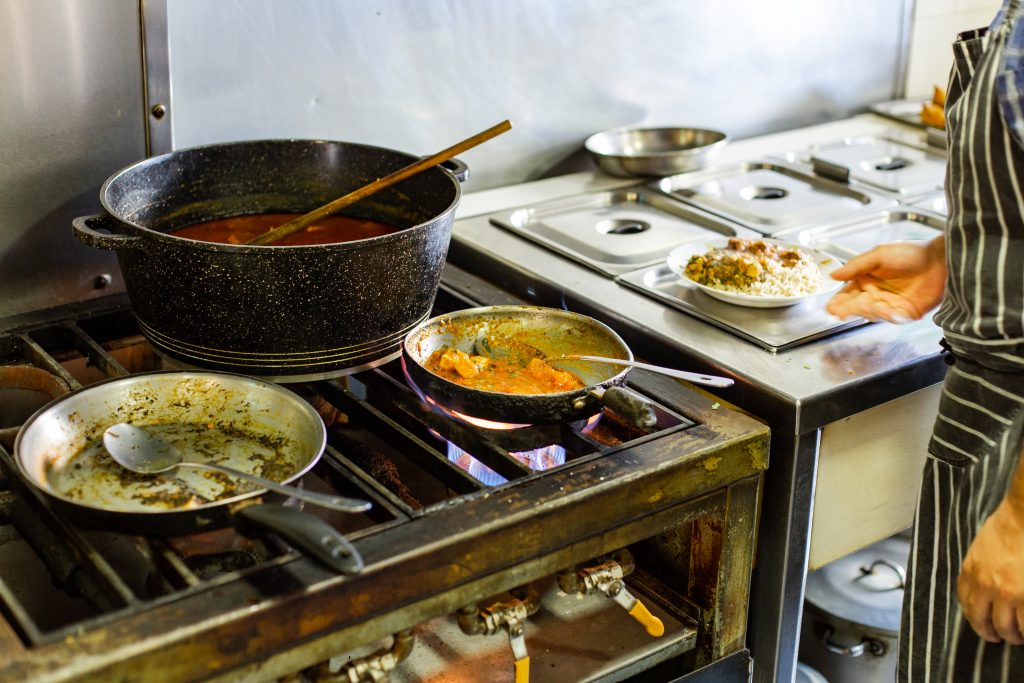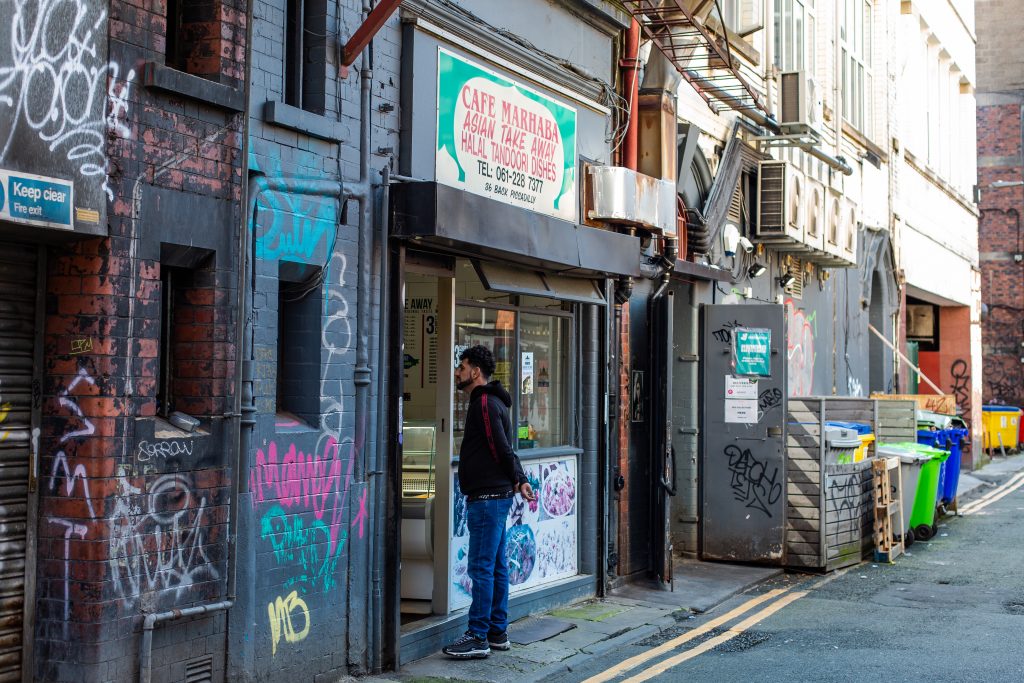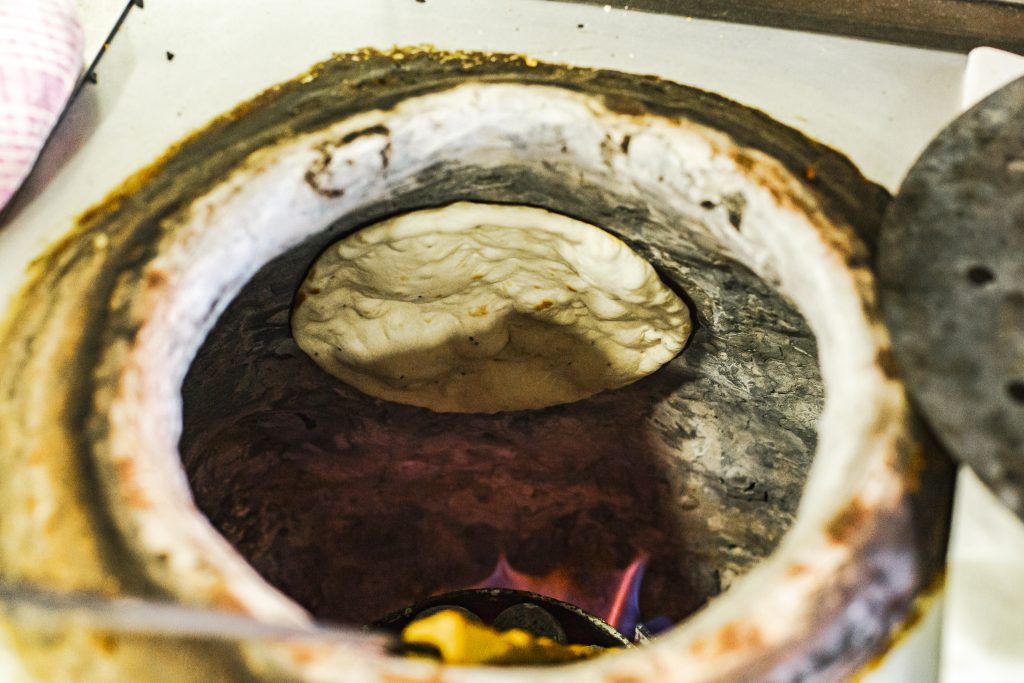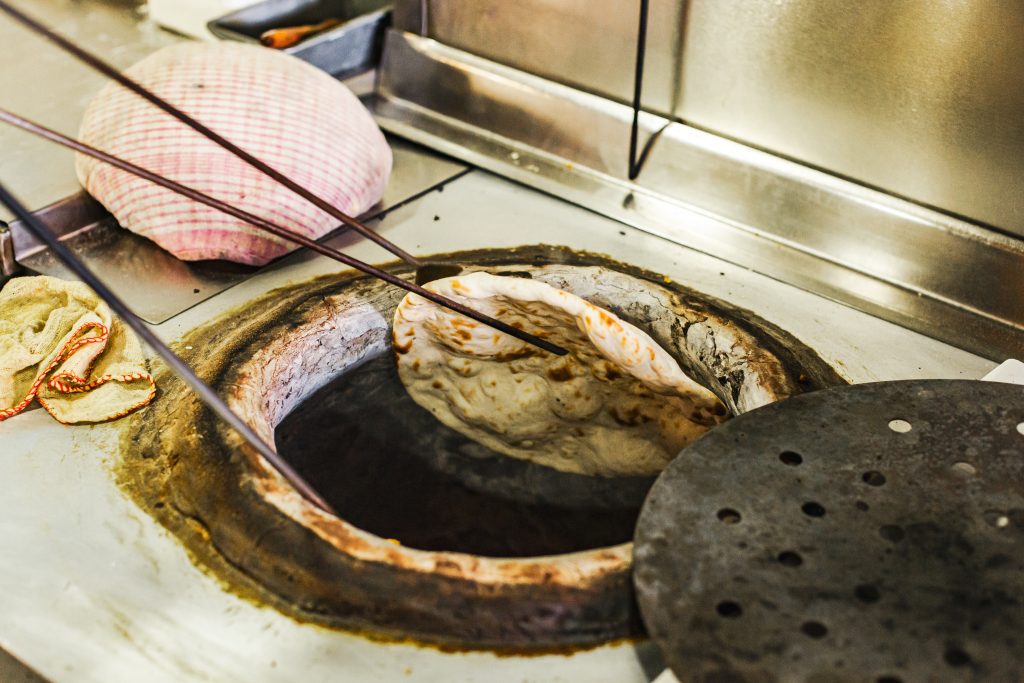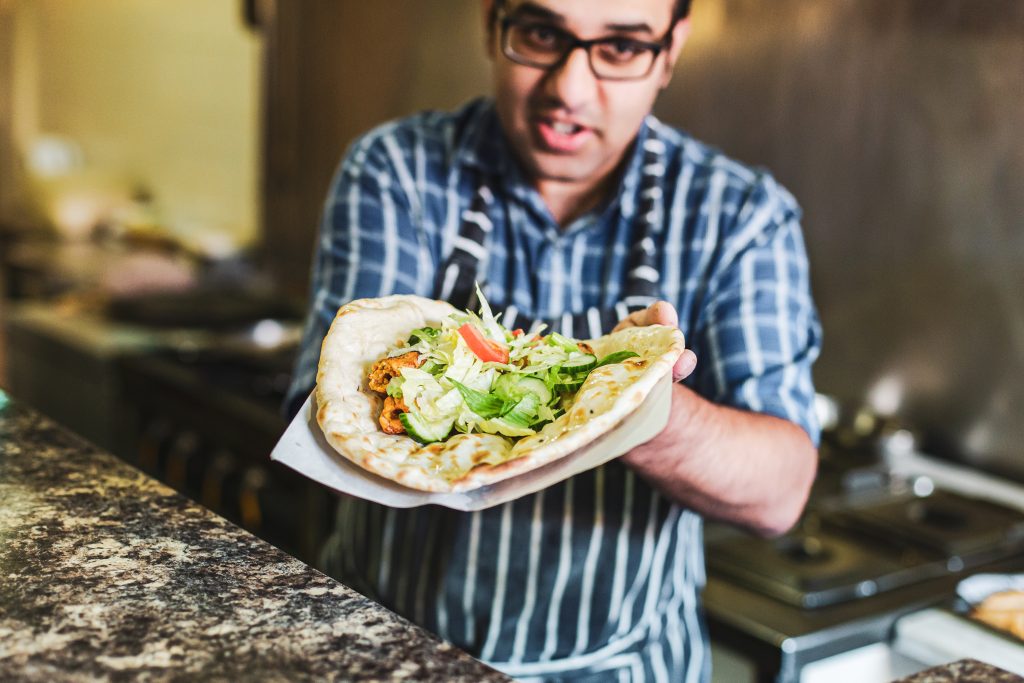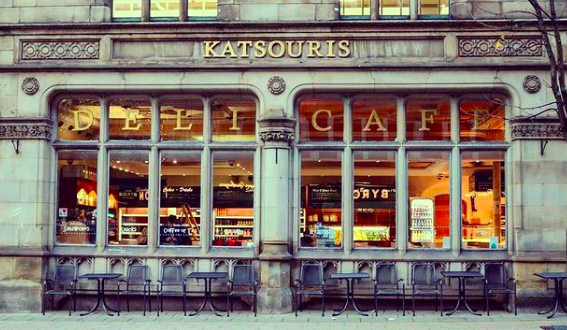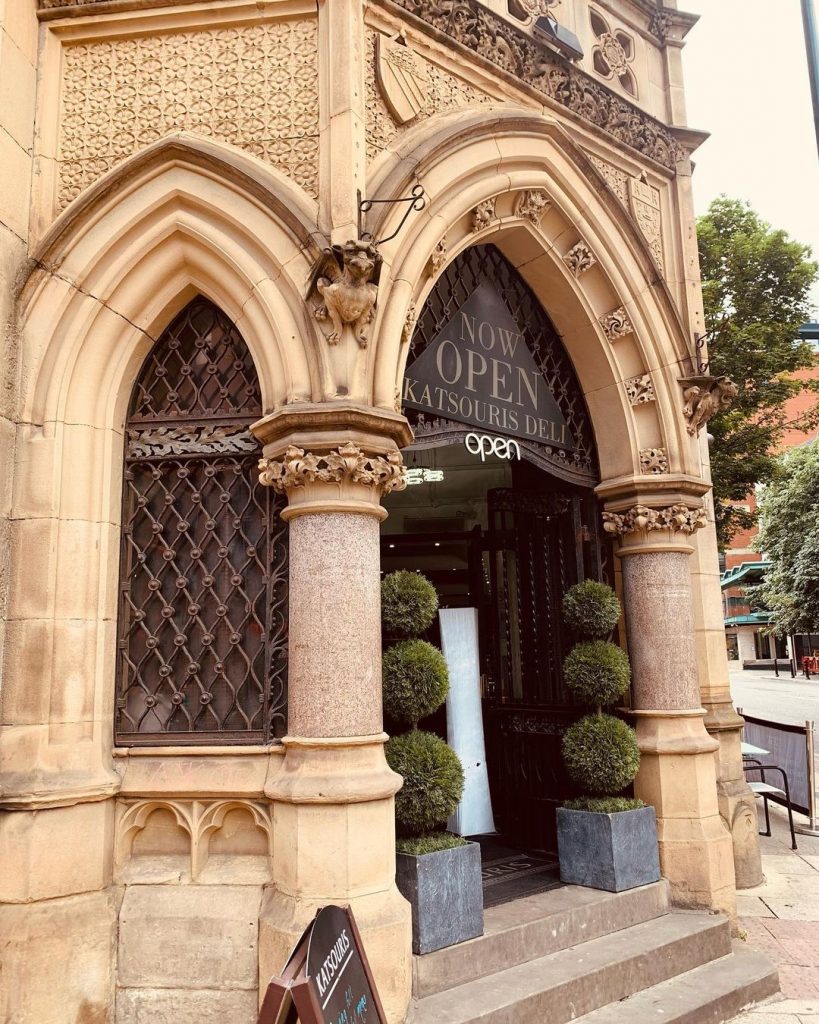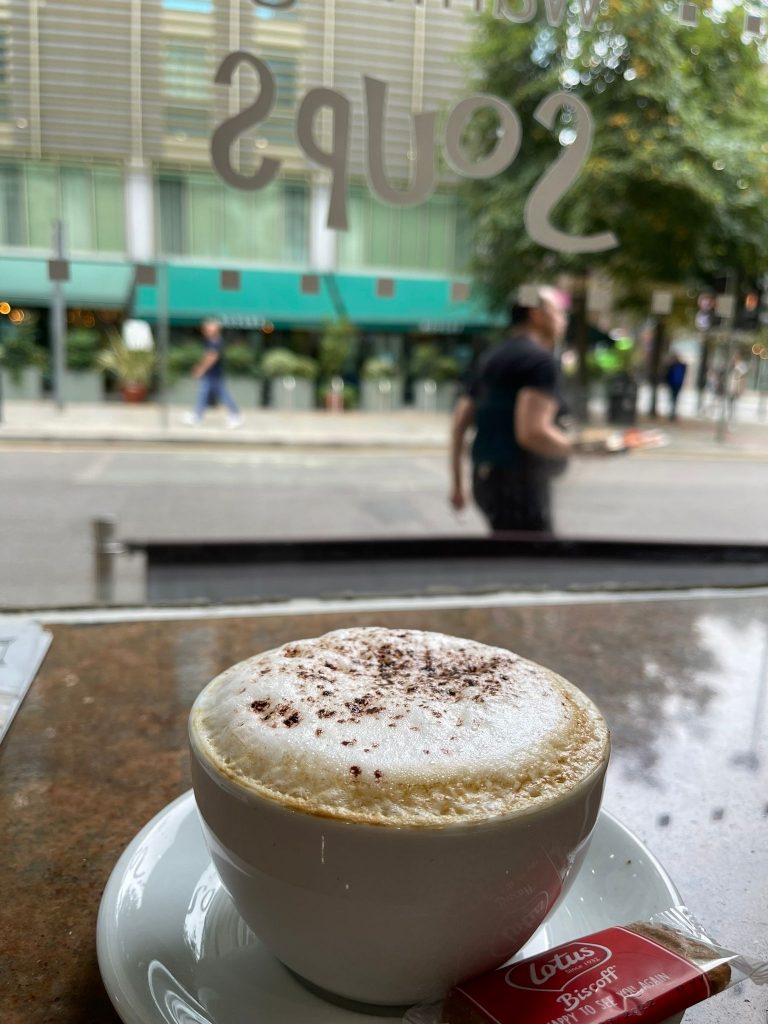For the majority of us, war is a tragedy witnessed through a TV screen or a series of social media posts. We live alongside it, but not through it. We gasp and recoil at the unspeakable horrors inflicted onto innocent civilians and, eventually, become sort of numb to the unrelenting atrocities that bombard our various devices.
And while we are tragically familiar with domestic terrorism in Manchester, the imposing threat of invasion and all out war has not hung apocalyptically over us in our lifetimes. The idea of sitting down with those closest to you and deciding there and then about whether to remain in your homeland or flee to foreign shores, not knowing the languages or what awaits you, nor having any guarantees of how you will support yourselves once you land, is a situation we are, thankfully, unlikely to ever find ourselves in.
Yet on February 23rd, 2022, this is exactly the situation Serge Shcherbyna and Polina Vynohradova found themselves in. Two years removed from opening their vintage football shirt store, Stunner, in Ukraine’s capital city Kyiv (an opening which was immediately shuttered for three months due to the Covid-19 pandemic) they sat down and weighed up their options. Russian tanks and troops were amassing at the borders. US intelligence provided evidence of an impending invasion and selected military targets. Whatever Serge and Polina’s decision, Putin’s army was coming, across land and sky.
So it was to Sikorsky International Airport in Kyiv and a flight to Brussels, where the throwback football fashionistas would meet a fellow vintage kit enthusiast friend, who would put them up for two weeks. Mere hours after they landed in Belgium, a friend rung to inform them that bombs had begun to drop in Kyiv. And so began a European excursion that would, by way of northern Italy, eventually lead the couple to an empty unit on South King Street and the open arms of a neighbourhood who couldn’t be any happier to welcome them into our city.
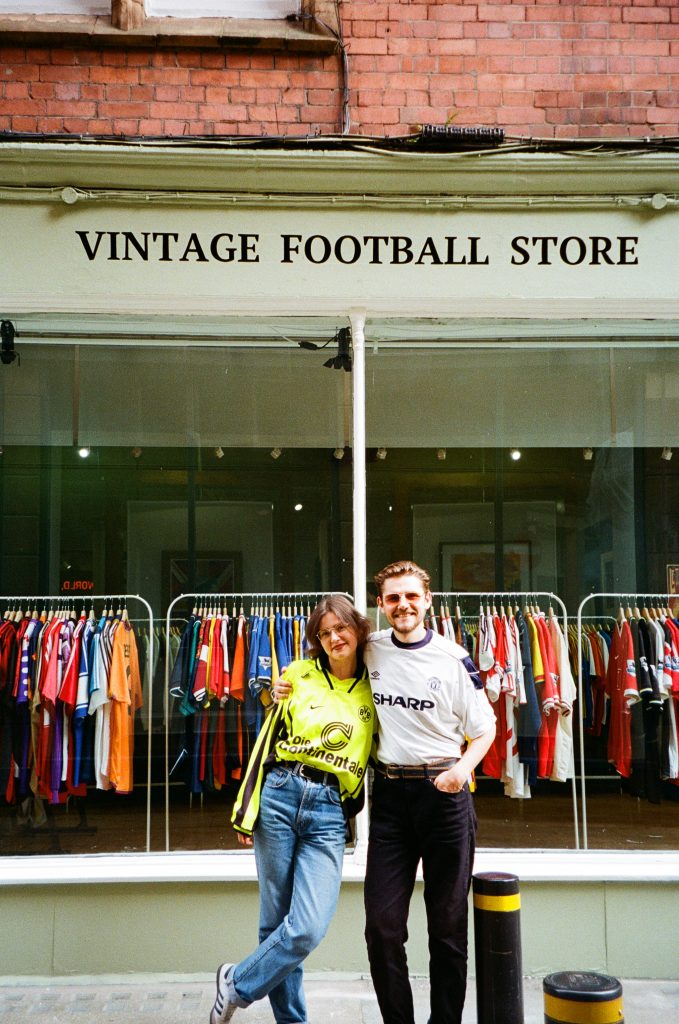
Nestled away just off Deansgate, Serge, 29, and Polina, 27, suitably set up shop opposite Castle Gallery, displaying their own works of art, albeit well worn polyester creations, rather than anything committed to canvas. Simple clothes rails run parallel across the cosy shop floor, their hangers draped in a timeline of excitable nostalgia from across the globe. Vintage armchairs are positioned alongside a coffee table adorned with premium, heavyweight reading materials such as Mundial Magazine and the iconic rose pink Gazzetta dello Sport.
As you thumb through the rails and the magazines, you are overlooked by towering tapestries dedicated to the likes of Diego Maradona and Gabriel Batistuta, themselves both respectively resplendent in the iconic Fiorentina and Napoli kits that they became synonymous with across their legendary careers.
Stunner is a shop in the same way John Rylands is a library. To fixate on it as such a simple space is to ignore the story and the struggle behind its existence. A vintage football shirt store, originally opened in the heart of Ukraine days before a global pandemic, that was then forced to close due to a war which saw its owners avoid Russian missiles by literally a few hours. With finances barely scraping rock bottom as they traversed Europe, Serge and Polina should not, realistically, be flourishing in some of the most prime real estate in Manchester city centre.
But they are, and just the opening of the shop, regardless of what happens in the future, should be celebrated as a monumental victory. A victory of the human spirit, of endurance and endeavour and of kindness and community. Of solidarity.
Stunner is a community space, one in which memories are shared and common interests are bonded over, regardless of age, gender or ethnic or economic background. Seeing Serge and Polina’s photo diary play out across Instagram, it is impossible not to be charmed by them, bedecked in their shop’s finest wares, paintrollers in hand, cigarettes in mouths, their effortless cool immortalised on film rather than a digital camera. It speaks to the timelessness of their products and their own styles and attitudes. These are people who care deeply about not only the quality of what they sell or wear themselves, but about each other, about each and every customer who walks through their door, about their fellow shopkeepers, or the staff at Gail’s Bakery next door who kept them fuelled throughout their store fit out.
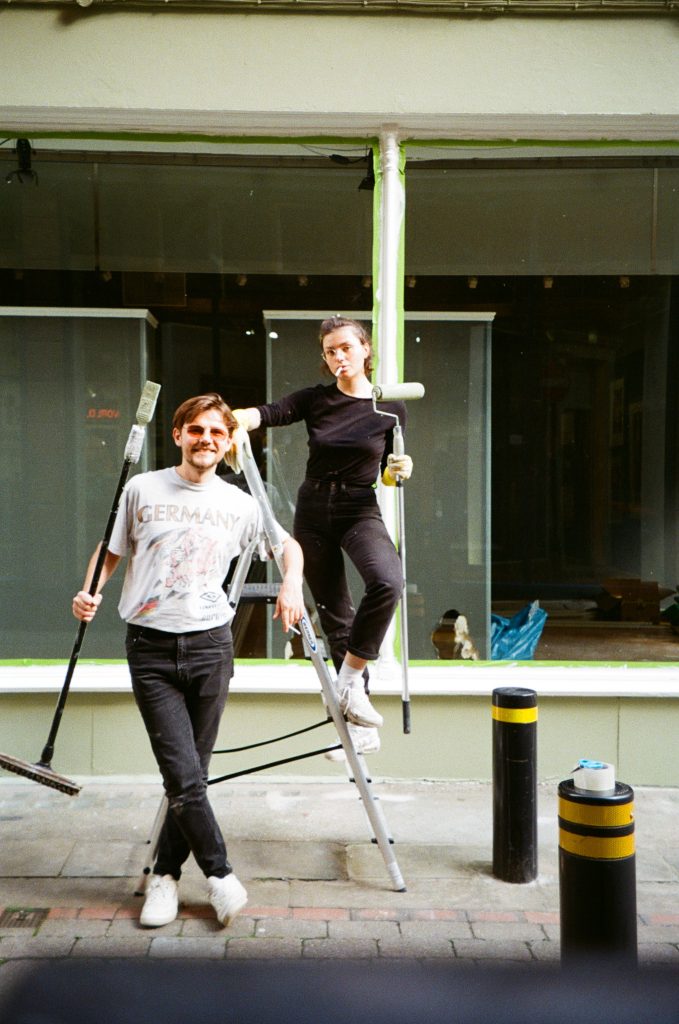
It is with all this in mind that I decided their’s was a story that needed sharing, so I was fortunate enough to grab a spare couple of hours in their company to talk football shirts, fashion, history, Macclesfield, Stone Cold Steve Austin and whether Pep is ever going to actually come in…
EATMCR: So to start, tell me a little bit about the history of Stunner. How did you get started?
Serge Shcherbyna: It started with my Instagram page, just when I was buying these shirts, I would start noticing them in like thrift stores, charity stores around 10 years ago, when the interest was not as high as it is right now. So it was fairly easy to acquire them and yeah, I started collecting them, then we engaged in our relationship, we moved in together and Polina would notice them in my closet and she would really appreciate the design as well, the aesthetics, she said, “let’s do something about it.“
Polina Vynohradova: But more like in a stylish way, because his page was pretty disastrous (laughing).
EM: So you brought that aesthetic approach to the table?
SS: Absolutely she did, because I had no idea how to properly photograph them and that kind of formed the way we collect, because when we land our hands on a proper gem like that, for example, Batistuta ’97 Fiorentina with the Nintendo sponsor, we normally shoot with film cameras, so we would wear it in a casual outfit and we take a few pictures, so as long as we did that, we considered the shirt has been collected, so now we can let it go.
And yeah, then she showed me how to sell on eBay, which was another revelation to me, but we got bored of selling online pretty quickly, because we always craved for this communication with people and then at some point we figured, let’s give it a shot and start the very first vintage football store in Ukraine, I think, because I never heard anyone doing this in Ukraine.
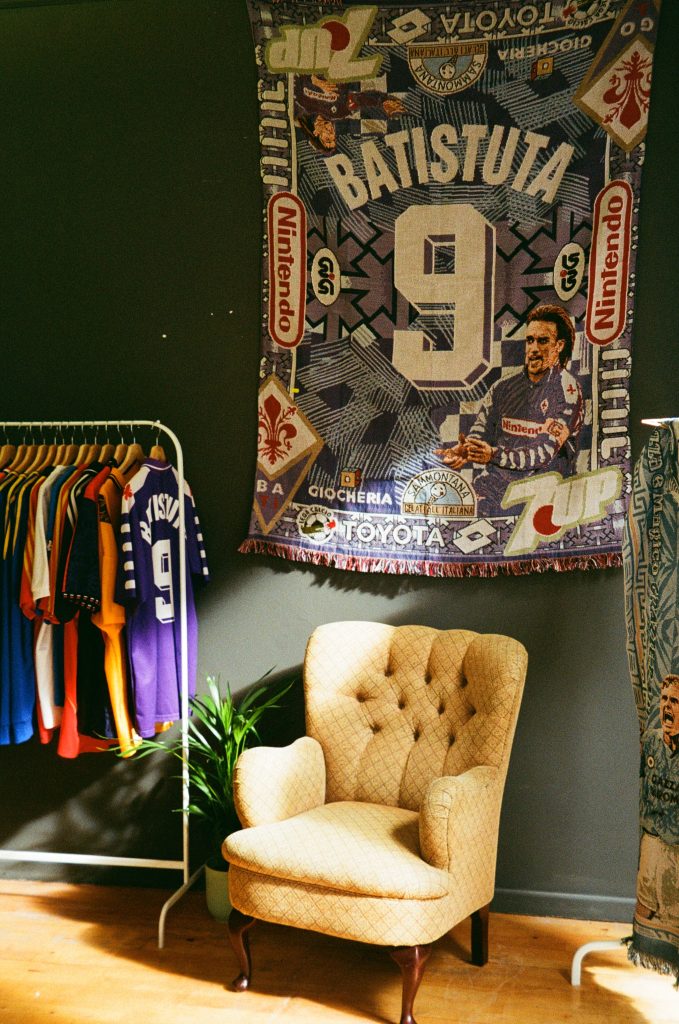
PV: It was very unique to have this kind of space in Kyiv, in Ukraine, and I think before we did that, when people were asking us, “what are you guys doing?” we were like, “we are into vintage football shirts” and they were like, what is that, “what are you doing with them, why football shirts?” It’s just the two of us, nobody can understand why are we doing that, so we thought maybe if we open the physical store, it will be a place that attracts the same people with the same vision, you know, and it actually became this place.
SS: Through the store in Kyiv, we met some of our best friends, with whom we are friends still, because it basically worked like a magnet for like-minded people who are creative about football in one way or the other. Many, many people said it is basically like their childhood dream, their childhood room.
PV: And it was really a small room, it was nine square meters, something like that. It was just a tiny, tiny room with a lot of shirts and a lot of memorabilia, with scarves, with paintings, with posters, with Panini stickers. So, this 30-year-old man, he came into the store, and his eyes look like he’s a 10-year-old, about to cry, he’s like a child looking around.
EM: And this was 2020 when you opened? Right before…
SS: (Laughing) Right before Covid struck. So, imagine that, going physical with this very risky concept, because Ukraine is not as much into football compared to England, but yeah, we opened in March, then bam!
PV: People said that we are crazy, you are dealing vintage football shirts, okay, we can live with that, but you want to open a store, really? You opened it during pandemic, are you crazy, or what? What’s wrong with you guys?
SS: It took us three months before we made our first sale!
PV: Yeah, we were closed , so we basically used the shop as a warehouse.
SS: We were online during the pandemic also. We kind of always balanced it out, even now we have a website, so everything that is present here is also present on our website. But it’s just, you know, to constantly have some income, like, almost guaranteed with online sales, whereas with having a physical presence, it normally, it’s not very balanced, because you have way more expenses compared to what you earn.

We’ll see how it goes here, it’s too early to say, it’s only been two weeks, but so far people seem to be very invested, plus now I think it’s the best time to go with this, because it’s kind of booming right now.
A lot of people started appreciating both the aesthetics and the value to them, and the emotional connection is still here, because, yeah, a lot of people of our age, or even older, they get this nostalgia kick, and they can spend hours in here, just surfing through the rails and having a chat with us.
PV: And now it’s not only for football fans, these shirts, it’s also for fashionistas. For ravers, for example, people who love raves, they appreciate these (gesturing towards a selection of particularly vibrant ’90s efforts) templates.
SS: They find a way to implement these into their wardrobes, which is really cool. We always discuss this, like, how come NBA jerseys found their way through hip-hop culture into wardrobes, but with football tops it never kind of happened, until just recently. Like, for the past four or five years, when all sorts of celebrities started appearing in public, like Drake. But then he brought this curse, like, the Drake curse. Whenever he sports one top, the team fails. And it’s still going, right? Yeah, it’s still ongoing. It’s mad, really. His streak is, like, almost like Undertaker’s streak at WrestleMania.
EM: Great reference, wrestling fans as well? You’re my favourite people now.
SS: Why do you think we’re called Stunner?
EM: (Approaching “the buffet’s open” excitement levels) Because o…..(loses power to speak briefly)
PV: Yeah it’s one of the reasons. Because of Stone Cold Steve Austin.
SS: Plus, it works on many, many levels, like, you call a fantastic volley from 40 yards a stunner, you call someone who’s very, like, (gesturing towards Polina) good-looking a stunner, and that’s how we refer to them shirts as well, like, the Zidane, she’s wearing, it’s a proper stunner. Yeah. So, once we started evolving towards more of a business, we had to sit down and come up with a name, and it was probably one of the few occasions when we didn’t argue at all.
EM: So you’ve reopened the store and got through Covid, but then Kyiv is about to be attacked by Russian forces, how and when did you decide to leave? Was that quite a bit before?
SS: We were very lucky in that regard, because obviously we understood that something is about to happen. And then we sat down, we discussed what should we do. And we came up with an idea, which ended up saving us from having to live through this experience. We reached out to our friend Damien, who runs the same sort of business, but in Brussels and we asked him, but he’s way more successful than we are. And we asked, would you host us for two weeks? We will come in, exchange experience, tell you about how it is running a physical store, because he was only present online. And at the same time, we would learn something from you. And that happened on February 23rd. So on the next day, we woke up to the news that Kyiv was getting bombed.
And that two-week long trip is still ongoing. From Brussels, we went to Italy briefly. And then from Italy, when we hit complete bottom in terms of finance, we reached out to our friend in Macclesfield, whom we also met through football, funnily enough. And yeah, we applied for this Homes for Ukraine scheme that the UK had introduced. And he was very welcoming, saying, “you can stay with me for as long as you need, guys” and he even played his major part in helping us to reopen the store here. So the quality of people that we have met throughout our journey is just unbelievable. All sorts of stories happen. It will forever remain one of the most amazing stories of my life, how helpful the people have been towards us.
Sometimes complete strangers. Sometimes barely familiar people. But even this now, the fact that we are sitting here, is mostly thanks to the host that we have here in the UK, who became our very best friend. He’s a proper guy. He believes in us. He said, “do whatever you need. I’m fully behind you.” He helped us financially. He helped us with the move. All of them did. The entire family. So crazy how it works.

EM: And how have you found the community here in Manchester and around King Street?
SS: In terms of businesses that surround us, I never expected anything like it.
PV: So friendly.
SS: We met pretty much everyone within the first three days when they noticed that, “who are these people who started painting this vacant property?” And we met pretty much everyone. We have Microdot over there, who are the iconic agency. They created the Oasis logo, the Verve and all that. We have Pep’s restaurant around the corner, which was obviously a deal breaker (laughing). Because we were told he parks his car there, and then he was walking by on Sunday when we were away. We missed him, so Pep, please come back. If you read this.
Gail’s Bakery as well, very friendly. We met all the staff there within a few days’ time. Pretty Green, their manager came in with a magazine for us and said “you should have this, we sell them at our place, but it will suit you perfectly.” We’ve got Mundial, which is a great magazine as well. I just bought it in a bookshop somewhere in the Northern Quarter, in Stephenson Square. I just want to fill this place, because for now all I see is empty spots on the walls. I really want to fill this with something that you would want to gaze at for a few minutes and enjoy it.
EM: Were there any other spots in town that you looked at before this one?
PV: When we were walking around Manchester, of course we started with Northern Quarter. But then we discovered this area. We saw all these beautiful cafes and galleries and I don’t know, we kind of thought that if we would have a store, it might be here. It works for us.
SS: It was like this multiple times before in our lives. Like when the idea, when this seed has been planted into your head, it’s very hard to let it go. So once we realised, okay, Northern Quarter might be a bit too noisy, let’s investigate this area and this property had been vacant for like six months. Right, OK.
And even though we were kind of scared at first, like “what we do with all this space?” But again, I think under these circumstances with your back against the wall, it’s when you tend to become more creative with your approach. So hopefully we will meet enough passionate and creative people about football to join the ship and to exhibit their stuff downstairs in a few months’ time.
EM: What’s the Ukrainian community like here in Manchester? Have you met many Ukrainians since arriving here?
PV: Yeah, we have. Funnily enough, next door in Gail’s, two Ukrainian girls work behind the counter. And we were talking to them in English for two weeks. But only a couple of days ago, Serge discovered that they speak between themselves in Ukrainian. What the hell? Why were we talking in English if we can speak Ukrainian? (Laughing)
SS: They have been here two years now. We all have our own stories. But mostly everyone that we have met from the Ukraine have ended up in the UK after the full scale war had started, whether it was a direct path or like in our case, like through a few different countries. But yeah, we’re very happy to find ourselves being here at this moment of time in this particular place. We’ll see where it leads us to.
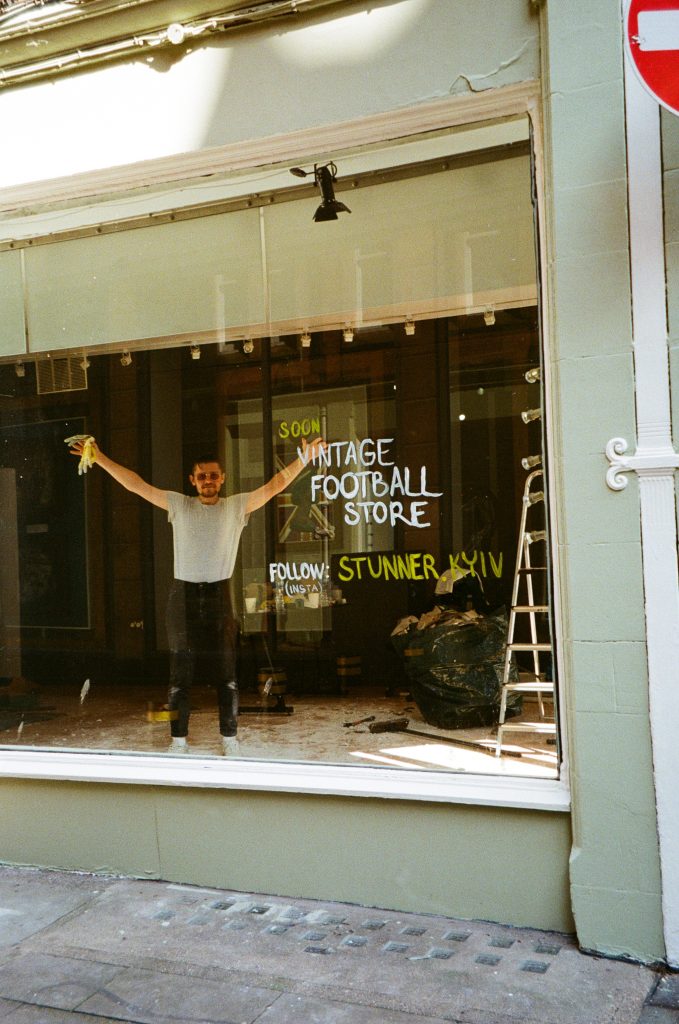
EM: How was the journey from Ukraine to Brussels? Because you mentioned it was right before bombs were being dropped on Kyiv.
SS: Yeah, one day before. So we took the plane as normal. Just like a normal flight. And it was not even days, it was like hours before, 12 hours before. I still remember it was very quiet in the airport, like almost suspiciously quiet, you know. And yeah, like literally 12 hours after we had landed in Brussels, our friend gave us a call at 4 a.m. saying like, “you guys really made it to the last possible flight”. If it wasn’t for Stunner, we would not probably consider leaving.
PV: Yeah, we wouldn’t think about Damien in Brussels, that we need to exchange experience. We would probably not even know him.
SS: Going to another country for two weeks is something we have never done before. We would only go for like four days, five days tops, because we could only afford that long of a trip running this business. At some point we dug deeper into this and we thought that vintage football shirts kind of saved us.
PV: Stunner saved us.
SS: Stunner saved us from having to deal with war happening in actual real life, which is still something I find very hard to believe. So it’s very important through this place that we have launched here to, first of all, give local people the idea that Ukrainians who…It was not their desire to end up here at this place of time. It was just due to unfortunate circumstances that we had to. And with the store, we want to show people that we are here not just to enjoy the Job Center. Some people might even go a bit twisted in the perception of Ukrainians here as somebody whom I have to feed with my taxes, etc, but we are here to present something as well. Like we are very much a creative nation, hardworking nation, and this is something we want to translate through running Stunner here. That we are very much willing to integrate within the society and perhaps interest you with what we have to show, to sell, to communicate about.
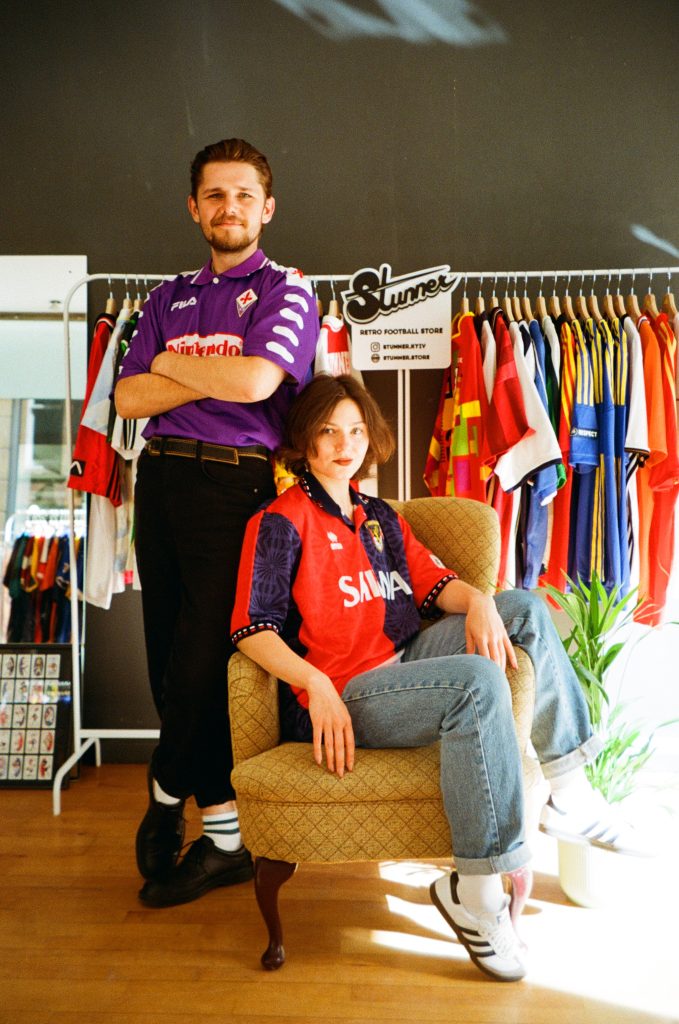
And the other thing, obviously, is constantly reminding everyone that the war is still ongoing. It’s not over. Because I knew straight away, like within maybe like six to eight months, that overall noise about it will die out eventually. As normally happens with anything that the media tends to speak about. And yeah, it’s exactly what has been happening lately.
PV: In the UK, what surprised me compared to other countries is how pretty much everyone with whom we share the fact that we are from Ukraine had something to reply. Like, “oh, I have just been a part of this fundraising group, we bought an ambulance and it was shipped over to Ukraine just recently”, Or, “oh, at my place of work we managed to gather a few thousands of pounds that was donated to either this or that initiative”, Or some of their friends are hosting a Ukrainian family. So, it’s 100% support.
I had never heard something, like, I never had a crooked eye towards us, because we are from Ukraine. It was only support, support, support constantly throughout almost a year. And we want to say thank you for that. To all the residents here in the UK with whom we had the pleasure to speak and meet. Because, yeah, nothing but support. I already mentioned the kind of support we received from the family who are hosting us.If it wasn’t for them, there would be no Stunner in Manchester. They believed in us and we hope not to fail them.
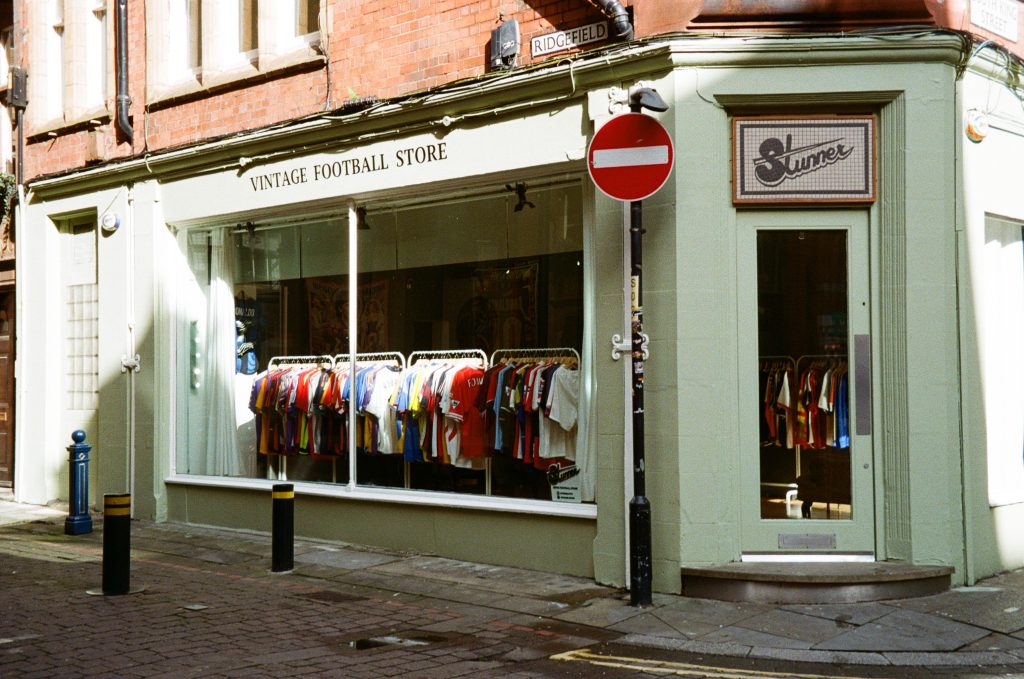
EM: Since arriving in Manchester, where are some of your favourite places to visit and hang out?
PV: Like restaurants, bars, cafes? Just recently, Ad Hoc. Ad Hoc, yeah, that’s good. I don’t know, but it’s kind of become a place where we constantly have a video chat with our friends because it’s quiet and they have great wi-fi. And great wine.
SS: It’s the spot where we jump on video calls with our Ukrainian friends who are all over the world. Some of them are still in Kyiv, some of them are in Germany. And it’s how we maintain this contact, because obviously we haven’t seen our friends for almost two years now. Same with our families.
Oh, another place that I wanted to mention is Calcio. Do you know Calcio? On Dale Street it’s a bar, and one of our friends is one of the co-owners. So it was basically our first place that we discovered here, because we went straight away. We knew already that this place is in Manchester and we want to go there. Because of course they have all these retro shirts on the walls and retro games, consoles. It pretty much has the same effect as our place, because when I ended up there, I kind of wanted, I wish they were letting rooms as well, because I would stay there for a week playing consoles, eating burgers, having wine, and that would be it.
EM: Have you been to Libero in Altrincham yet?
SS: Libero! We really want to go there. We follow them for a long time on Instagram, and now somebody had mentioned it recently, like “have you been to Libero?” And I was like, “fucking hell! It’s really close!”
Over the course of our two hours gathered around the shop floor coffee table, the conversation twists and turns through covering games for Italian media (Stunner’s insta is a hive of exquisitely curated fan interviews outside grounds from across the UK and Europe, as well as football kit culture and history), Serge and Polina’s favourite kits (Serge is currently very partial to David Seaman’s Euro ’96 away goalkeeper’s jersey, while Polina is obsessed with a Genoa number from the early noughties), which teams are most popular with customers so far (Serge reveals that City shirts sell best, currently noticing a 60/40 split between them and United in terms of popularity) and the pair’s affinity for shooting on film and listening to vinyl. However, there is one key line that Polina tells me she wants to share with everyone above all else.
“I really would appreciate it if you could mention it in the article, the fact that UK has become our home away from home.”
That feels like quite an apt line to finish on, doesn’t it? Forza Stunner forever.
There are multiple charities currently raising money for the people of Ukraine. If you can, donate to Warchild to help Ukrainian children affected by the war
